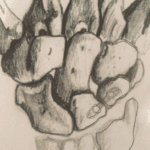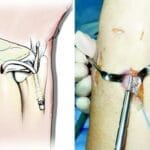When you’re scheduled for shoulder surgery, one of the most important steps is ensuring you’re in the correct position on the operating table. The way you’re positioned during surgery can have a big impact on the success of the procedure. One common position used for shoulder surgeries is the “beach chair position.” This position is designed to give your surgeon the best possible access to your shoulder while keeping you comfortable and safe.
What is the Beach Chair Position?
The beach chair position is similar to sitting in a reclined chair. In this position, your upper body is slightly lifted, usually at an angle between 30 and 45 degrees, while your legs stay flat. This setup allows the surgeon to easily reach the front and side of your shoulder, making it ideal for many types of shoulder surgeries, especially those involving the rotator cuff, or the shoulder joint itself.
Benefits of the Beach Chair Position
- Better Access for the Surgeon: This position allows the surgeon to see and reach the areas of your shoulder that need work, which is essential for a successful surgery.
- Clear Imaging: During surgery, the surgeon might need to use X-rays to see inside your shoulder. The beach chair position makes it easier to get clear images, helping the surgeon to be precise and accurate.
- Versatility: If the surgery needs to be adjusted or converted to a different type during the procedure, the beach chair position allows for these changes more easily.
Considerations and Risks
- Limited Access to the Back of the Shoulder: While the beach chair position is great for the front and side of the shoulder, it doesn’t provide good access to the back. If the surgery requires work on the back of the shoulder, a different position might be needed.
- Blood Pressure and Blood Flow: Because you are upright, there can be changes in your blood pressure and blood flow, especially if you have heart or circulation issues. This is something the anesthetic team will carefully monitor during the procedure.
How You’ll Be Positioned
On the day of your surgery, here’s how you’ll be positioned in the beach chair:
- Comfort and Support: You’ll be placed on the operating table with your upper body raised at an angle. To keep you comfortable, a pillow or wedge may be placed under your knees, and extra padding will be used to protect your skin and joints.
- Head and Neck Support: Your head will be securely positioned on a special headrest to keep it steady during the surgery. This prevents any unwanted movement and protects your neck.
- Draping and Imaging: After you’re positioned, the surgical area will be draped to keep everything sterile. The team will also set up an imaging device (like an X-ray machine) to take pictures of your shoulder during the surgery, ensuring everything is done accurately.
Intraoperative Imaging
During the procedure, the surgeon will use imaging to guide the surgery. The imaging device is positioned to focus on the part of your shoulder that needs work. For example:
- Viewing Shoulder Fractures: To get the best view of certain shoulder fractures, the surgeon might use specific angles to capture clear images.
- Advanced 3D Imaging: If available, 3D imaging can give a detailed view of the shoulder, helping the surgeon to see exactly where repairs are needed.
Alternatives to the Beach Chair Position
While the beach chair position is very effective for most shoulder surgeries, there may be better choices for some. If your surgery requires work on the back of your shoulder or if you need a different type of procedure, the surgeon might choose a more upright position, with your body tilted closer to 70 or 90 degrees. This provides better access to different parts of your shoulder while still offering the benefits of the beach chair position.
The beach chair position is a trusted and effective way to position patients during shoulder surgery. It offers great access to the shoulder, allows for clear imaging, and helps the surgical team to perform the procedure safely and effectively. However, every surgery is unique, and your surgical team will choose the best position for your specific needs.
If you have any questions or concerns about your position during surgery, don’t hesitate to ask your surgeon. They are there to make sure you are informed and comfortable every step of the way.






